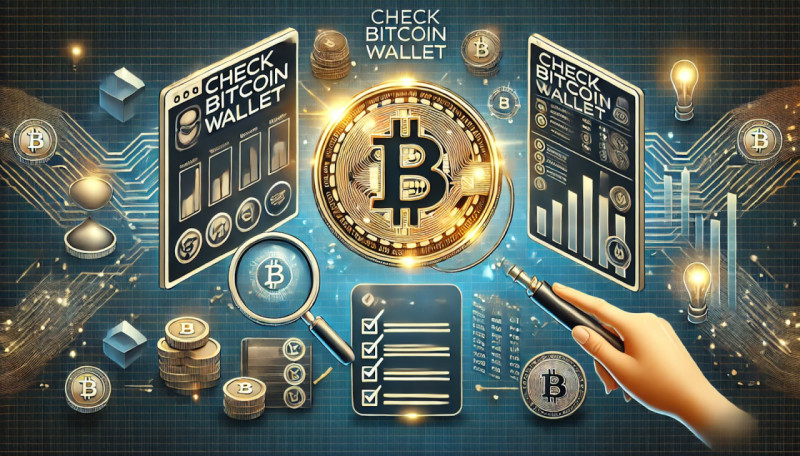
Understanding how to check Bitcoin wallet is crucial for anyone managing digital funds. A Bitcoin wallet acts as a gateway to your assets, and ensuring its functionality is fundamental to protecting your investments. Whether you are confirming balances, tracking transactions, or assessing potential vulnerabilities, maintaining regular oversight of your wallet provides peace of mind and financial clarity.
Wallet tracking plays a pivotal role in managing digital assets effectively. Many users lose track of their holdings because of outdated software, forgotten credentials, or failure to regularly review activity. By periodically verifying your wallet’s status, you ensure that your funds remain accessible and under your control. This becomes particularly critical in situations where access to funds is time-sensitive, such as during market volatility or urgent operations.
Key Scenarios Requiring Wallet Oversight
There are several scenarios where reviewing your wallet becomes an indispensable task. For instance, ensuring the accuracy of a recent transaction is a frequent need. Delays in confirmation or discrepancies in the amount transferred can create unnecessary anxiety. By actively tracking your wallet, you can quickly resolve such concerns. Instruments like blockchain explorers let you trace operations and confirm their completion without relying on third-party services.
Another significant reason to review your wallet is detecting unauthorized activity. While digital assets are designed with robust protective measures, no system is entirely immune to vulnerabilities. Regular checking ensures you can spot unusual transactions early and take action before any potential loss escalates.
Wallet tracking is equally critical when reconnecting with older or dormant wallets. Individuals who have held digital assets over the years may forget about wallets they set up previously. Rediscovering these funds often starts with tracking historical activity, identifying operation receipts, or searching through old storage devices for recovery files.
Safeguarding Digital Wealth Through Routine Monitoring
Routine checks are also essential for maintaining access to funds. Users may encounter issues with outdated wallet software, misplaced keys, or forgotten passwords. Without proactive reviews, these minor challenges can evolve into major obstacles, resulting in delays in accessing your assets or even complete loss of funds. Keeping track of updates and compatibility requirements for wallet software is a preventive measure that saves time and stress.
For those engaging in frequent transactions, checking becomes an ongoing necessity. Whether you're managing trades or using digital funds for regular payments, accurate and timely tracking of your wallet ensures smoother operations. It also minimizes the risk of errors, such as sending assets to an incorrect address or overlooking operation fees.
The Broader Implications of Wallet Tracking
Beyond individual security, wallet oversight supports responsible financial management. By understanding your transaction history, you can analyze spending patterns, evaluate investment strategies, and plan future financial moves. These insights empower you to make informed decisions and maximize the potential of your holdings.
Tracking also provides an opportunity to explore advanced features and instruments designed to enhance your wallet experience. Alerts for operation activity, detailed analytics, and multi-factor authentication are examples of features that strengthen the management of digital funds.
A proactive approach to wallet oversight not only safeguards assets but also builds confidence in navigating the digital financial landscape. Whether you are a seasoned investor or new to managing digital wealth, integrating regular wallet reviews into your routine ensures that your holdings remain accessible, transparent, and protected from avoidable risks.
Understanding Wallet Checks
To check bitcoin wallet means ensuring that your digital financial instruments are functioning properly and your holdings are accounted for. This process involves verifying key details such as your balance, transaction archive, and the functionality of the software or hardware you use. Wallet checks go beyond mere reassurance; they provide critical insights into your financial activity and the integrity of your digital assets. Regular verifications are essential for maintaining control over your holdings and ensuring you can act decisively when needed.
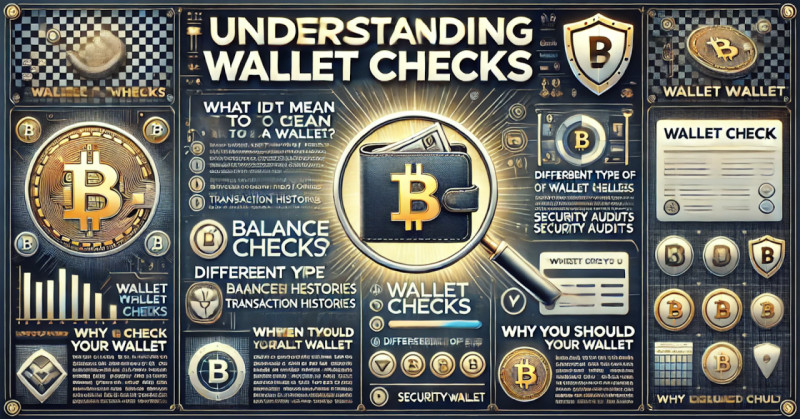
What Does It Mean to Check a Wallet?
- Balance verification: at its core, checking your balance confirms the entire funds available in your account. It ensures that all operations — whether deposits or withdrawals — are accurately reflected. Balance verification can be especially important after making a transaction or during periods of network congestion. This step also helps you identify discrepancies that might signal issues, such as errors or unauthorized transfers.
- Transaction history review: reviewing your operation archive is an indispensable part of understanding how funds are being managed. Whether you’re confirming that an outgoing payment was processed or validating incoming funds from a sender, a comprehensive look at transaction logs provides clarity. Operation details such as timestamps, amounts, and recipient addresses ensure full accountability and help resolve disputes quickly.
- Operational readiness: wallets, whether software-based or physical devices, require periodic updates and checks to ensure they are working as intended. This involves verifying that the software or hardware you use is compatible with the current blockchain network and that it is free from bugs or outdated protocols. Ensuring the integrity of your instruments is critical for uninterrupted access to your holdings.
Different Types of Wallet Checks
- On-chain checks: these involve interacting directly with blockchain data. By using blockchain explorers, you can view real-time information about your account’s activity. Public tools like these let you verify the number of confirmations for a transaction, check the validity of an address, or ensure your account reflects the correct balance. On-chain checks are vital for resolving any discrepancies between your local records and the immutable blockchain ledger.
- Off-chain checks: these focus on the systems you control locally, such as wallet backups or integration with third-party services. Off-chain reviews ensure that your recovery processes are intact, your wallet application is correctly configured, and your backups are accessible. Off-chain checks complement blockchain verifications by ensuring the instruments you use for interacting with the blockchain remain operational.
- Software compatibility tests: over time, the mechanisms managing your assets may require updates to remain compatible with network changes. Software checks include confirming that the latest versions of applications are installed and ensuring no critical updates are pending.
Why You Should Check Your Wallet
- Detecting unauthorized activity: routine verifications protect against unwanted surprises. By carefully tracking activity, you can detect unauthorized transactions or signs of compromised credentials. For example, small unauthorized operations are often precursors to larger breaches and can be identified through consistent reviews.
- Achieving financial clarity: to check bitcoin wallet means providing an accurate snapshot of your holdings, transaction history, and financial position. Whether you’re preparing for tax filings, planning investments, or simply tracking activity, these verifications help maintain an organized record. This is particularly valuable for users with multiple accounts or those who frequently trade.
- Ensuring readiness: wallets require regular maintenance for avoiding technical setbacks. Delays in applying software updates, neglected backups, or outdated hardware can prevent access during critical moments. Routine checks mitigate these risks, ensuring smooth access whenever needed.
- Streamlining user experience: verifying your mechanisms improves usability. Ensuring proper synchronization across devices, removing redundant backups, and optimizing configurations result in a more efficient experience. This is especially helpful when managing large portfolios or multiple addresses.
The Importance of Routine Verification
Consistently checking your wallet ensures that your holdings are accessible, accurate, and safe. Beyond simply knowing your balance, these checks enhance your ability to address unexpected events. They let you act swiftly in case of network changes, suspected breaches, or transaction discrepancies.
By prioritizing thorough and regular reviews, you build confidence in your financial management approach. These practices not only safeguard assets but also help prevent potential issues before they escalate into larger problems.
Instruments for Checking Your Bitcoin Wallet
Efficient tools simplify managing and tracking digital assets, ensuring you stay informed about balances and operation histories. For reviewing crypto wallet activity, several platforms and applications provide comprehensive insights into account activity, operation confirmations, and fund movements.
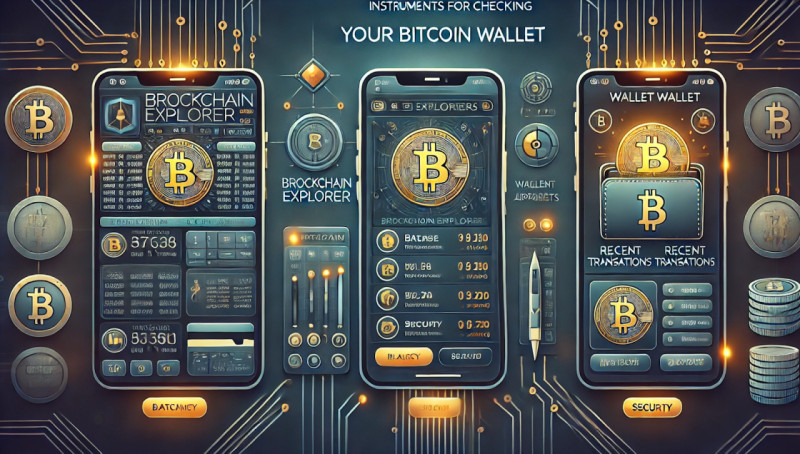
Blockchain Explorers
What are blockchain explorers? Blockchain explorers are web-based mechanisms that provide real-time access to information kept on the blockchain. They let users view transactions, confirm payments, and review activity associated with a specific public address. These platforms are essential for verifying operations and tracking account activity without relying solely on wallet applications.
Popular blockchain explorers:
- Blockchain.com: widely used platform with a user-friendly interface for exploring addresses, tracking transactions, and viewing blockchain statistics.
- Blockstream Explorer: known for its advanced privacy features and support for multiple networks, Blockstream provides detailed insights into address activity and operation fees.
- Mempool.space: focused on transaction mempools, this instrument helps users estimate confirmation times and analyze blockchain activity in real-time.
How to use blockchain explorers:
- Search for an address: enter the public address you want to review in the explorer's search bar.
- Review transaction history: view all incoming and outgoing operations, including timestamps, amounts, and confirmation status.
- Analyze balance details: confirm that the total funds in the address match your expectations.
- Verify confirmations: ensure a transaction has received the required number of confirmations to be finalized.
These mechanisms provide transparency and reliability, letting users independently verify data without relying on wallet interfaces.
Wallet Provider Dashboards
What do provider dashboards offer? Many wallet services include built-in dashboards for account management. These interfaces streamline the process of tracking balances, reviewing operation archives, and ensuring compatibility with blockchain updates. Provider dashboards are often tailored to the specific needs of their users, making them intuitive and straightforward.
Popular examples of provider dashboards:
- Ledger live: this application connects to Ledger devices, letting users check bitcoin wallet and track multiple accounts, view real-time balance updates, and manage transactions.
- Coinbase interface: designed for ease of use, Coinbase's dashboard provides access to operation records, portfolio summaries, and detailed analytics of past activity.
- Exodus wallet dashboard: Known for its visually appealing layout, this dashboard integrates portfolio tracking with transaction management, making it an excellent choice for beginners.
Advantages of provider dashboards:
- Real-time monitoring: these instruments sync with blockchain networks to ensure balances and operations reflect current activity.
- Centralized features: many dashboards combine portfolio management, transaction tracking, and analytics into a single interface.
- User-friendly design: designed for simplicity, provider dashboards are accessible to users with varying levels of expertise.
Provider dashboards eliminate the need to navigate external mechanisms, offering a centralized solution for asset management.
Third-Party Apps
Secure and trustworthy apps:
Third-party applications can complement provider instruments, offering additional features for tracking and management. While many are secure, users should prioritize well-known, reputable apps to avoid risks like phishing or malware.
Examples of reliable apps:
| Blockfolio | Mobile app for tracking balances, managing portfolios, and viewing transaction archives |
| Delta Investment Tracker | This app focuses on portfolio analysis, providing insights into performance trends and asset allocation |
| Electrum | Known for its lightweight structure, this desktop-based instrument lets users verify operations and manage private keys securely |
Advantages of third-party apps:
- Cross-platform access: many apps are available on mobile, desktop, and web, making them accessible from multiple devices.
- Customization: apps often let users tailor their experience, such as setting price alerts or tracking multiple accounts.
- Extended features: some include advanced mechanisms like tax reporting, operation categorization, and multi-account support.
Limitations of third-party apps:
- Trust concerns: users must ensure the app is legitimate to avoid compromising sensitive data.
- Syncing issues: some apps may lag behind real-time blockchain updates, creating discrepancies in displayed balances.
Choosing the Right Tool for Your Needs
The instrument you choose depends on your requirements. For straightforward verification, blockchain explorers are the most direct option. If you prefer an integrated experience, provider dashboards offer a comprehensive solution. For those managing multiple accounts or seeking enhanced analytics, third-party apps provide additional functionality.
By combining these mechanisms effectively, you can ensure accurate tracking, maintain full control over your digital assets, and stay informed about every transaction associated with your account.
How to Check Your Bitcoin Wallet Balance
Verifying the balance in your account is a straightforward process when you understand the instruments and steps involved. Whether using a blockchain explorer or accessing your provider’s interface, the process ensures transparency and clarity in managing your digital assets.
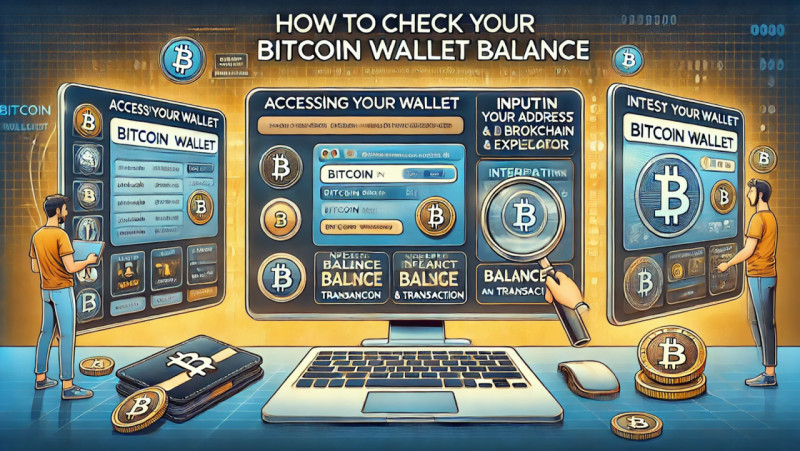
Step-by-Step Process
1. Accessing your wallet
- Using provider credentials: log in to your account through the official platform of your service provider. Ensure you use the correct credentials for avoiding unnecessary delays. Providers often have dashboards where balances and operations are visible immediately upon login.
- Private key access: if you are using a hardware device or another form of private key storage, connect the device or access the software coupled with your key. Follow the prompts to unlock your account and check bitcoin wallet.
- Direct address input: for those who don’t have access to a dashboard or prefer independent verification, use the public address coupled with your account. This method doesn’t require logging into a provider’s interface and is ideal for cross-checking data.
2. Inputting your address into a blockchain explorer
- Navigate to a reliable blockchain explorer, such as Blockchain.com or Blockstream.
- Enter your public address in the search field. This action will generate an overview of all activity linked to that address.
- Review the data displayed, which typically includes transaction details and the current balance associated with the address.
3. Interpreting balance and transaction data
- Balance summary: look for the section showing the full amount of Bitcoin held at the address. This figure represents your available funds.
- Operation overview: inspect incoming and outgoing transfers. Each entry includes timestamps, amounts, and transaction IDs for detailed tracking.
- Confirmation status: check the number of confirmations for recent operations. Unconfirmed transactions may temporarily not appear in your total balance.
These steps not only provide clarity but also let you cross-verify data with your provider's interface.
Common Challenges
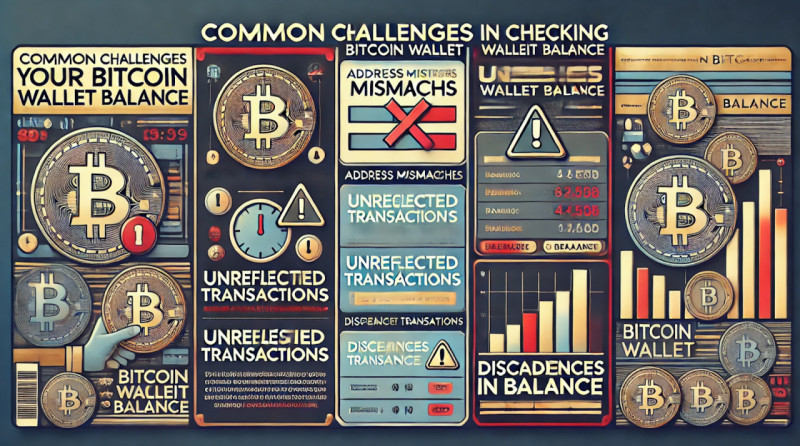
Address mismatches
- Understanding the issue: mismatch often occurs when multiple addresses are associated with a single account. If you input an incorrect address, the balance displayed won’t align with your expectations.
- Solution: double-check the address you’re using. Retrieve it directly from your provider's interface or backup file to ensure accuracy.
Unreflected transactions
- Causes: delays in network confirmations or system syncing can prevent recent operations from appearing in your balance.
- Solution: use a blockchain explorer for verifying transaction status. Ensure the operation ID shows the required number of confirmations. If it doesn’t, wait for the network to process it.
Discrepancies in balance
- Potential issues: transaction fees deducted during transfers might account for small differences. Similarly, technical issues with a provider’s interface may cause temporary inconsistencies.
- Steps to resolve:
- Compare data across multiple sources, such as blockchain explorers and provider dashboards.
- Contact support if discrepancies persist.
Why Regularly Checking Your Balance Matters
Keeping an eye on your balance ensures your funds remain intact and helps you identify potential issues, such as unauthorized activity or network delays. By following the outlined steps and addressing common challenges, you can confidently manage your account and maintain full visibility over all operations. Whether using a provider’s dashboard or a blockchain explorer, these methods simplify the process and offer peace of mind. Reviewing your crypto wallet balances regularly to stay informed and secure your investments effectively.
Verifying Transaction Histories
Understanding the details of your operation archive is essential for maintaining transparency and resolving discrepancies. By carefully reviewing transaction data and understanding how to use available instruments, you can gain full visibility into the movement of your digital funds.
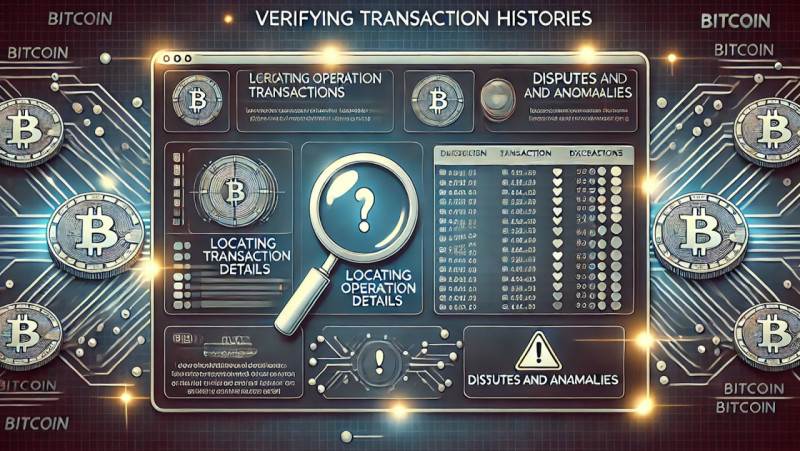
Locating Operation Details
Using transaction IDs (TXIDs). Every transaction generates a unique identifier known as a TXID. This serves as a digital fingerprint for the transfer. You can use TXIDs to check bitcoin wallet, trace specific operations and confirm their status:
- Where to find TXIDs: retrieve the transaction ID from your provider’s interface, email confirmations, or by checking your operation log in a blockchain explorer.
- Using TXIDs for tracking: input the TXID into a blockchain explorer like Blockstream or Mempool. This action displays the transaction’s status, including confirmation details and the addresses involved.
Confirmation counts. Confirmations are critical for ensuring an operation has been successfully added to the blockchain. The more confirmations a transaction has, the more secure it becomes.
- Minimum confirmations needed: most operations are considered fully verified after three confirmations, but this can vary depending on the recipient's requirements.
- How to check confirmations: blockchain explorers display the confirmation count in real-time. If a transaction is pending, you’ll see “unconfirmed” or “pending” status.
Reviewing operation history
- Summary overview: transaction archives display all completed transfers tied to your address. Details typically include timestamps, sender and receiver addresses, and amounts transferred.
- Sorting transactions: use filters in your provider’s dashboard or a blockchain explorer to sort operations by date, amount, or type. This is especially useful for tracing older transfers or identifying specific patterns.
Disputes and Anomalies
Incomplete or incorrect transactions. At times, operations may appear incomplete or incorrect because of delays, technical errors, or human mistakes. Here’s how to address these scenarios:
- Check for pending status: confirm whether the operation is pending by reviewing its confirmation count. Network congestion can delay processing.
- Verify address accuracy: ensure the recipient address was entered correctly. Even a minor error can result in funds being sent to the wrong address, and such mistakes are often irreversible.
- Review transaction fees: insufficient fees can slow down operations or cause them to remain unconfirmed for an extended period.
Resolving disputes with providers or exchanges. If you encounter issues with a transaction processed through an exchange or service, follow these steps:
- Gather evidence: compile relevant details, including the TXID, timestamps, and the amount in question.
- Contact support: reach out to the provider’s customer support team. Provide all necessary information to expedite the resolution process.
- Leverage blockchain data: use blockchain explorer details for validating your claims. This data provides an immutable record that can support your case.
Common dispute scenarios
- Double spending: rare but possible in cases of network vulnerabilities. Check blockchain data to confirm that only one operation has been recorded.
- Funds not received: if funds haven’t appeared in the recipient’s account, verify the address, check the transaction status, and confirm with the recipient’s provider.
Why Regular Tracking Matters
Regularly reviewing operation archives helps ensure that all transfers occur as intended. It also lets you catch anomalies early, preventing losses or delays. Whether you're auditing recent activity or resolving disputes, tracking each transaction is crucial for accountability. Review crypto wallet operation logs often to maintain oversight and ensure your digital funds are managed effectively.
Ensuring Wallet Security During Checks
When accessing or reviewing your wallet information, safeguarding your digital assets must remain a priority. Taking proactive steps to check bitcoin wallet for identifying threats and adopting privacy-centric practices will protect your funds from theft or misuse.
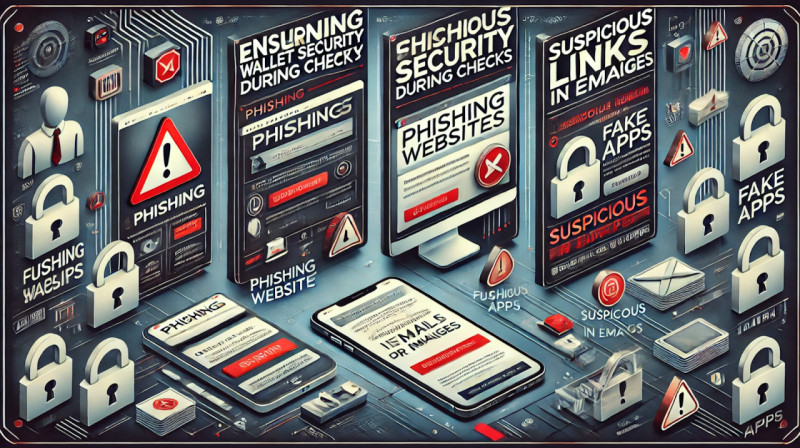
Recognizing Scams
Cyber threats are a persistent challenge for those managing digital assets. Scammers often exploit users’ desire to access wallets quickly. Identifying warning signs can prevent losses.
Common red flags
- Phishing websites: fraudulent websites impersonate legitimate wallet providers or services. They lure users into entering sensitive information like private keys or passwords.
- Always verify the URL of the platform you're using. Look for secure connections (indicated by "https://") and check for slight misspellings in domain names.
- Fake apps: malicious apps mimic legitimate software but are designed to steal credentials or install malware. Ensure any app you download is directly from an official website or a trusted app store.
- Suspicious links in emails or messages: scammers often send emails or direct messages containing links to fake recovery machanisms or verification platforms. Avoid clicking on links unless you’re certain of their origin.
How to verify authenticity
- Research the platform: look up reviews, official announcements, and support channels. Legitimate providers often have active social media profiles or community forums.
- Direct downloads only: use links provided on the official website for downloading apps or software. Third-party downloads may contain tampered files.
- Two-factor authentication (2FA): ensure the platform offers 2FA and activate it to add an extra layer of protection for your access credentials.
Maintaining Privacy
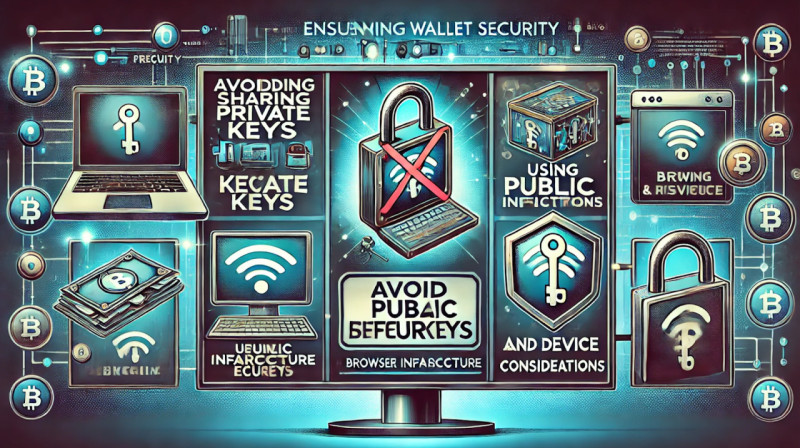
Preserving the confidentiality of sensitive information is essential during reviews. Many losses occur when users inadvertently expose private details, leaving them vulnerable to theft.
Avoid sharing private keys
- Private keys are confidential: these strings of data are equivalent to a master key. Sharing them grants full access to your funds, so never disclose them to anyone.
- Beware of recovery services promising miracles: some services claim to recover lost keys but are often scams. Use professional services only after thorough vetting.
Using public infrastructure. Public Wi-Fi or shared networks can expose your activity to potential hackers. Avoid using these networks when reviewing your wallet information.
- Stick to private networks: access wallet information only from trusted, secure networks, such as your home or office Wi-Fi.
- Use a VPN: virtual private network (VPN) encrypts your internet traffic, making it more difficult for attackers to intercept data.
Browser and device considerations
- Regular software updates: ensure browsers, operating systems, and any wallet-related software are updated to address vulnerabilities.
- Antivirus instruments: keep antivirus software active and up-to-date to block potential malware.
Proactive Measures for Safer Reviews
- Double-check platforms: before entering sensitive details, verify that you're interacting with the legitimate website or application.
- Audit your access points: ensure the devices and browsers you use are free from malware and spyware.
- Backups in place: have backups of essential data kept securely, but avoid accessing them unless absolutely necessary.
Staying cautious during wallet reviews ensures your digital assets remain protected. Whether performing routine balance reviews or resolving transaction issues, always prioritize safety. Check bitcoin wallet details in environments you trust, using authenticated platforms and adhering to privacy practices that safeguard your funds.
Advanced Wallet Analytics
Gaining deeper insights into operation trends and account behaviors can enhance your understanding of asset performance. Advanced mechanisms and data-driven strategies not only optimize management but also help identify risks and opportunities. This approach is vital for users who wish to go beyond basic checking and adopt a more strategic view.
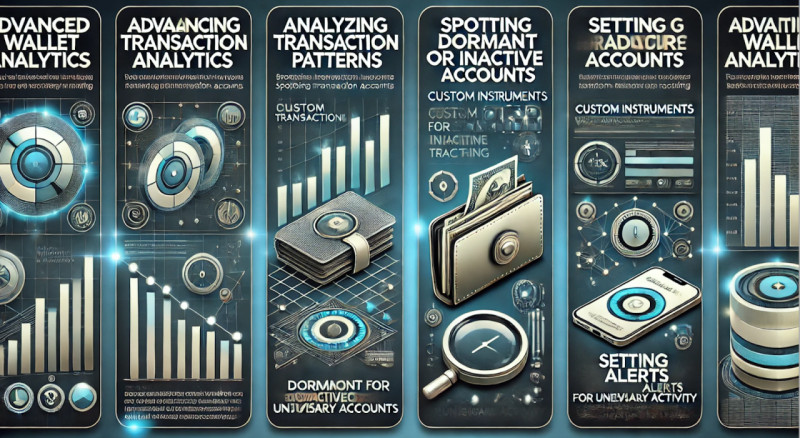
Using Data for Insights
Reviewing operation archives and activity patterns reveals valuable information about the movement of assets, behavioral trends, and potential irregularities.
Analyzing transaction patterns
- Frequency analysis: understanding the frequency of operations can distinguish active trading accounts from those used for storage. For instance, accounts with daily activity are likely tied to frequent trading, while those with minimal activity may represent long-term holdings or forgotten accounts.
- Volume trends: identifying trends in transaction amounts helps determine whether smaller, regular transfers or sporadic, larger operations dominate. This can also provide clues about potential shifts in strategy, such as increased market participation or liquidation efforts.
- Time-based patterns: recognizing peak activity hours or days might highlight responses to market events, such as sudden price changes, or personal habits, like bi-weekly salary withdrawals.
Spotting dormant or inactive accounts. Wallets with no recent activity might either belong to long-term holders or have been forgotten over time.
- Dormancy indicators: stability in balances coupled with no operational activity over a prolonged period typically indicates a dormant account.
- Reactivation signals: when previously dormant accounts suddenly show movement, it might signal reactivation by the owner, hacking attempts, or external stimuli like market surges.
Custom Instrument for Advanced Tracking
Advanced tracking platforms provide users with specialized mechanisms for delving deeper into asset analysis and management. These instruments offer detailed insights and monitoring capabilities that surpass basic blockchain explorers.
Sophisticated tracking platforms
- Blockchain explorers with analytics features: advanced explorers like Blockchair and Chainalysis enable users to visualize transaction graphs, detect account interconnectivity, and uncover potential associations between addresses.
- Portfolio management applications: platforms such as CoinStats and CoinTracking aggregate data from multiple wallets, providing a centralized dashboard for users to track balances, transaction archives, and portfolio performance.
Setting up alerts for unusual activity. One of the most powerful features of advanced instruments is the ability to set alerts for account checking. Alerts act as an early-warning system for potential issues.
- Activity thresholds: users can set thresholds that trigger notifications for specific events, such as transfers exceeding a particular value or more frequent operations than usual.
- Geographical anomalies: some platforms can detect and alert users if account access occurs from unfamiliar IP addresses or regions, a common sign of unauthorized access.
- Automated notifications: alerts are sent via email, SMS, or app notifications, ensuring that users receive real-time updates regardless of their location.
Benefits of Analytics and Alerts
Advanced analytics and alert systems empower users with the instruments to maintain oversight and take proactive steps when needed. These features are particularly useful for professional users, institutions, or individuals managing significant holdings to check bitcoin wallet regularly.
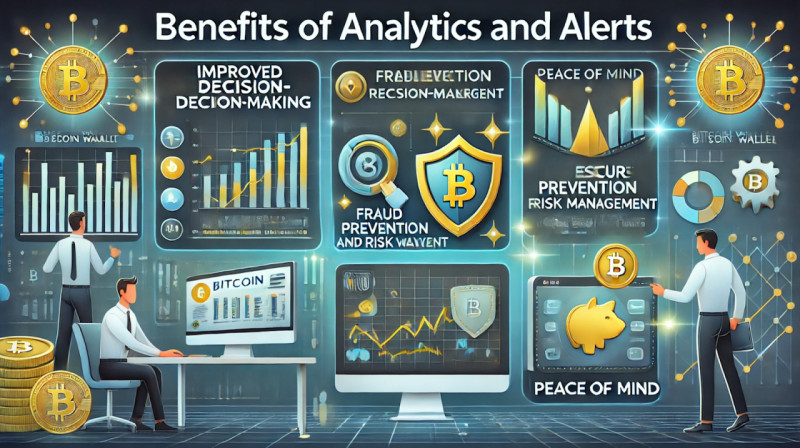
Improved decision-making
- Data-driven planning: insights from operation trends enable users to adjust strategies, such as reallocating funds or adjusting risk exposure.
- Historical comparisons: analyzing historical data offers a benchmark for performance, letting users anticipate future behaviors and improve strategies.
Fraud prevention and risk management
- Real-time alerts: anomalous activities, such as unauthorized access or suspicious transactions, can be flagged immediately, allowing users to act quickly to secure their holdings.
- Layered protection: combining tracking instruments with alerts creates a multi-layered approach to safeguarding funds, ensuring no action goes unnoticed.
Peace of mind
- Continuous oversight: automated systems provide round-the-clock surveillance, which is especially crucial for users with large balances or high-value operations.
- Proactive safeguards: knowing that alerts are in place helps users feel confident that any issues will be addressed promptly, minimizing potential losses.
By adopting advanced analytics and alert systems, users can transform their approach to managing digital assets. These mechanisms go beyond basic balance checks, offering insights that enhance strategic decision-making and protect against potential threats. Utilizing sophisticated instruments not only strengthens management practices but also provides peace of mind in an ever-evolving financial landscape. To ensure you’re fully informed and protected, review crypto wallet performance using detailed analytics and tracking systems tailored to your needs.
Troubleshooting Issues with Wallet Checks
Occasionally, users face challenges while attempting to track or access their accounts. Understanding potential issues and practical solutions ensures smooth management of digital holdings and helps resolve common hiccups effectively.
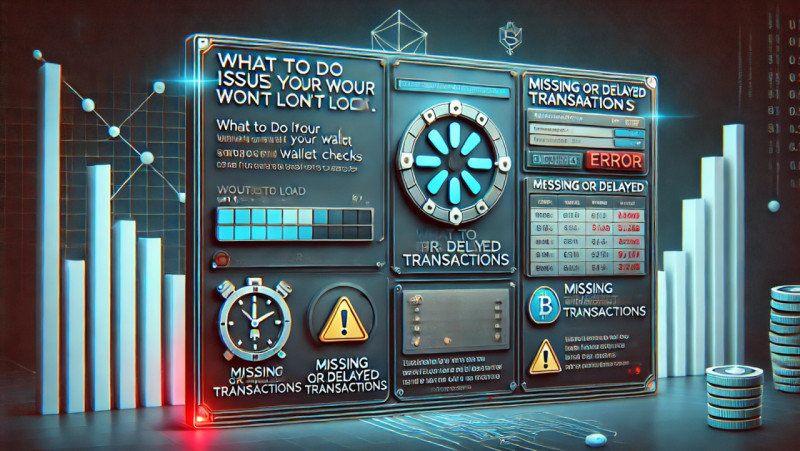
What to Do If Your Wallet Won’t Load
Accounts that fail to load or display errors typically indicate technical or compatibility problems. Identifying and addressing these issues promptly prevents delays in accessing balances or transaction histories.
Possible causes and solutions
Software incompatibility. Outdated software can result in connectivity errors or crashes.
- Solution: Update the application or firmware to the latest version provided by your wallet service. Ensure compatibility with your current operating system.
Network issues. Poor internet connectivity may interrupt account synchronization or data retrieval.
- Solution: Verify your internet connection is stable. If possible, switch to a wired connection for better reliability.
Overloaded servers. High traffic on provider servers can delay responses.
- Solution: Wait and try again during off-peak hours or access through alternative devices.
Cache problems. Corrupted cache files can prevent the app from loading properly.
- Solution: Clear the cache and restart the application. Reinstall if the issue persists.
Incorrect credentials. Entering incorrect PINs or passwords may lock access temporarily.
- Solution: Use account recovery options, such as email verification, to reset credentials. Always verify the legitimacy of recovery links.
Missing or Delayed Transactions
Operations that appear incomplete or fail to reflect in the account are a common source of concern. These delays often result from network congestion, errors in transaction details, or confirmation backlogs.
Steps to resolve operation delays
Verify transaction details. Double-check the operation ID (TXID) for confirming the accuracy of recipient addresses and amounts.
- Solution: Use blockchain explorers to check bitcoin wallet and track the status. Confirm the number of network confirmations for ensuring the transaction is being processed.
Network congestion. Delays often occur during periods of high activity when miners prioritize operations with higher fees.
- Solution: If you suspect insufficient fees, track the status using a blockchain explorer. Resubmit with a higher fee if necessary, using replace-by-fee (RBF) features when available.
Unconfirmed transactions. Pending transfers may remain unconfirmed if they fail to meet the network's minimum requirements.
- Solution: Check if the operation can still be processed or contact the recipient for additional steps to accelerate confirmation.
Recipient errors. Incorrect recipient information or inactive addresses can cause funds to stall.
- Solution: Confirm the recipient’s address is active and accurate. If the issue persists, collaborate with the recipient or their provider.
When to Contact Support or Blockchain Services
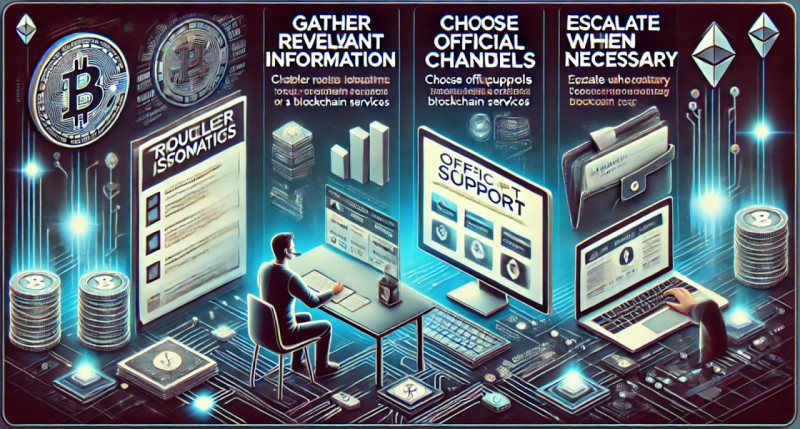
If problems persist despite troubleshooting efforts, reaching out to customer support or blockchain services can help resolve more complex issues.
Steps for effective support communication
Gather relevant information. Prepare all essential details, including transaction IDs, account credentials, and device specifications.
- This ensures the support team can diagnose the issue without unnecessary back-and-forth communication.
Choose official channels. Always contact the official support channels listed on the service provider’s website to avoid phishing attempts.
- Look for verified contact details and avoid sharing sensitive information unless requested through secure methods.
Escalate when necessary. For unresolved issues, escalate the matter to a higher tier of support or consider professional recovery services if funds remain inaccessible.
- Some blockchain service providers offer dedicated instruments for troubleshooting complex operation problems.
Addressing technical challenges promptly ensures a seamless experience in managing accounts and transactions. Regular maintenance, such as keeping software updated and verifying operations promptly, minimizes the risk of encountering these issues. For an enhanced understanding of your account status and to maintain access, review crypto wallet functionality regularly using verified instruments and best practices.
The Importance of Regular Wallet Maintenance
Managing digital assets effectively requires consistent attention to maintenance practices. Regular upkeep ensures smooth access, safeguards funds, and keeps you prepared for any potential issues.
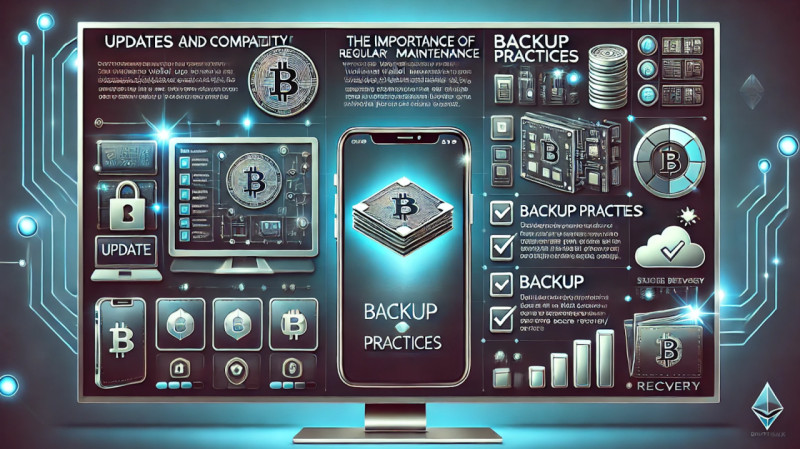
Updates and Compatibility
Staying current with the latest software versions is critical for maintaining functionality and safety. Updates often include enhancements to user experience, compatibility with emerging mechanisms, and fixes for vulnerabilities.
Why updates matter
- Bug fixes: developers regularly address glitches that may impact access or performance.
- Enhanced features: updates often include user-friendly features, such as improved transaction tracking or better integration with platforms.
- Protection against threats: vulnerabilities in older software versions can expose users to risks. Regular updates protect against these by patching potential entry points for unauthorized access.
Steps to keep software current
- Enable automatic updates: if available, enable this feature for ensuring you’re always using the latest version.
- Manually check for updates: periodically verify that your application or device firmware is up to date.
- Verify source authenticity: always download updates directly from the official provider’s website to avoid counterfeit software.
- Test compatibility: ensure updates work well with your operating system and any associated instruments to check bitcoin wallet properly.
Backup Practices
Backing up recovery information and operation data is essential for minimizing risks. Ensuring these records are kept correctly reduces the likelihood of losing access to assets.
Key aspects of reliable backup practices
Diverse storage methods
- Use multiple storage mediums such as paper, hardware devices, or engraved metal plates.
- Avoid relying on a single method, as redundancy ensures you can recover assets even if one backup is compromised.
Storage location
- Keep backups in physically secure places like fireproof safes or bank deposit boxes.
- Avoid keeping sensitive data in easily accessible areas, such as your phone or email.
Validation of backups
- Periodically test recovery details for ensuring they remain accurate and usable.
- Use a controlled environment to verify backups, avoiding exposure of sensitive information.
Avoid digital exposure
- Refrain from saving recovery data on devices connected to the internet. Online storage increases susceptibility to hacking.
Periodic Audits
Regular reviews of your account status help detect anomalies, track transactions, and ensure everything is functioning as expected.
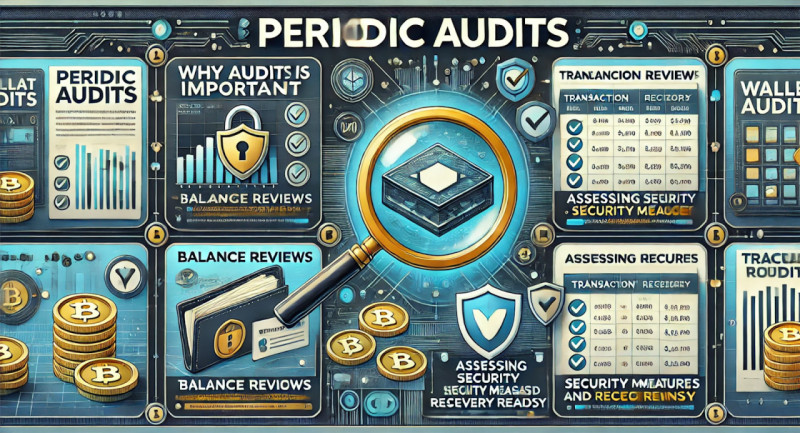
Why audits are important
- Spotting irregularities: audits can reveal unauthorized operations or errors that may otherwise go unnoticed.
- Preventing oversights: reviewing balances and records ensures that small discrepancies don’t evolve into larger problems.
- Tracking activity: periodic checks give a clear picture of usage patterns, which is especially useful for budgeting or planning future investments.
How to perform an effective audit
Balance reviews
- Cross-reference your account balances with transaction archives to confirm accuracy.
- Use mechanisms like blockchain explorers for verifying account activity without exposing sensitive information.
Transaction records
- Maintain detailed logs of your operations, including dates, amounts, and recipients.
- Compare logs against blockchain records for consistency.
Assessing security measures
- Evaluate whether access methods remain effective and reliable.
- Update PINs or passphrases periodically to prevent unauthorized use.
- Review recovery readiness
- Confirm that backups are intact and accessible.
- Reassess storage locations and consider upgrading to more robust methods if necessary.
Regular maintenance protects against disruptions, reduces risks, and ensures smooth operation of your financial tools. By following these steps, you can confidently manage your assets and mitigate potential issues. Incorporating these habits into your routine will make it easier to track accounts and resolve challenges. For consistent performance and peace of mind, review crypto wallet settings and updates regularly while adhering to backup and audit best practices.
Best Practices for Ongoing Wallet Monitoring
Proper oversight of digital holdings ensures their safety and usability over time. By implementing consistent tracking strategies, you can stay informed about operations, detect irregularities early, and maintain control over your assets.
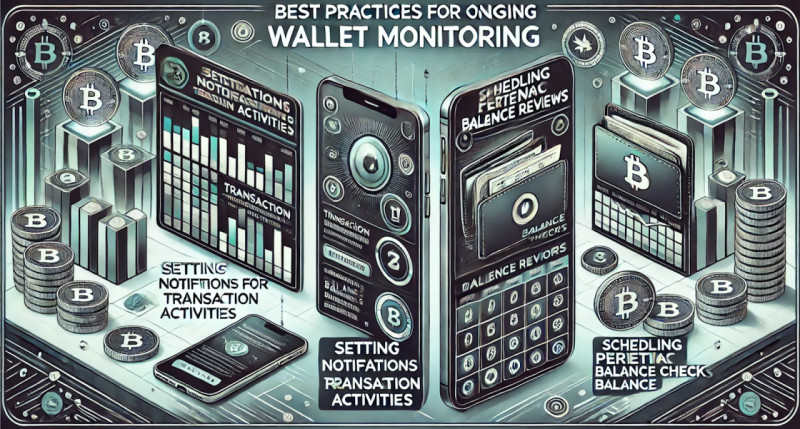
Setting Up Notifications for Transaction Activities
Notifications provide real-time updates on account activity, ensuring you’re always aware of changes. These alerts can be instrumental in detecting unauthorized actions or confirming legitimate operations.
Steps to enable notifications
Use built-in features: most service providers offer alert systems for transfers, balance updates, or login attempts. Activate these options in your account settings.
Choose preferred channels: select notification methods such as email, text, or push notifications for immediate updates.
Configure trigger events: set alerts for key actions like large withdrawals, new logins, or incoming transfers. This helps filter unnecessary notifications and focuses on significant events to check bitcoin wallet.
Why alerts are essential
- Immediate response: timely notifications let you act quickly in the event of unauthorized activity.
- Peace of mind: alerts confirm the success of transactions, eliminating the need for manual tracking.
- Proactive management: real-time updates help you make informed decisions about your financial strategies.
Scheduling Periodic Balance Reviews
Regularly reviewing your account ensures that balances align with your expectations and provides an opportunity to verify recent operations.
How to schedule effective reviews
Set routine intervals: choose a frequency — daily, weekly, or monthly — based on your activity level. High-volume users may benefit from more frequent reviews.
Automate processes: use instruments or apps to generate reports on account activity and balances, saving time while ensuring accuracy.
Compare with external logs: if you maintain separate records, cross-reference them with your account’s transaction archive to spot any discrepancies.
Benefits of regular reviews
- Account reconciliation: ensure that all transfers, deposits, and withdrawals match recorded activity.
- Fraud detection: identify unauthorized changes or unrecognized operations before they escalate.
- Financial planning: regular reviews help you assess spending and investment patterns, aiding long-term planning.
Pro tip: for enhanced convenience, utilize blockchain explorers or provider dashboards to access activity summaries without exposing sensitive information.
Enhancing Protection with Multi-Signature and Two-Factor Authentication
Advanced access controls add layers of safety to your account. These features are designed to prevent unauthorized use, even if one layer of defense is compromised.
Multi-signature (Multisig)
| How it works | Setting it up | Benefits |
| Requires multiple approvals (e.g., from different devices or people) to authorize a transaction | Use services or platforms that offer multisig functionality | Reduces the risk of a single point of failure, ensuring no single individual can misuse funds |
| This is ideal for shared accounts or large holdings | Configure the number of required signatures and assign them to trusted parties or devices |
Two-factor authentication (2FA)
| How it works | Steps to enable | Advantages |
| Combines something you know (password) with something you have (e.g., a code sent to your phone) | Activate 2FA through your provider’s security settings | Protects against unauthorized access, even if your login credentials are compromised. |
| Choose authentication apps like Google Authenticator for added reliability over SMS-based codes |
Best practices for both features
- Use unique, strong passwords for each account.
- Regularly update 2FA settings to replace old codes or devices.
- Avoid sharing multisig access or 2FA credentials with untrusted individuals.
By integrating these practices into your routine, you can maintain a strong oversight of your financial instruments while minimizing risks. Setting notifications, scheduling regular reviews, and implementing robust protection methods ensure that your holdings remain accessible and protected. For comprehensive management, review crypto wallet settings and activity periodically, adapting your strategies to evolving needs.
Conclusion: Stay Informed and Secure
Maintaining consistent oversight of digital assets is vital for preserving control and avoiding unnecessary risks. Regular tracking empowers you to catch potential issues early, stay on top of your transaction history, and ensure that your funds are always accessible when needed. By adopting proactive habits, you establish a foundation for long-term asset management and financial peace of mind.
The Importance of Regular Monitoring
Regularly check bitcoin wallet activity helps detect anomalies before they become significant issues. For example, you might notice an unexpected operation or identify discrepancies in your transaction records. Tracking also ensures that your accounts remain up to date with the latest software or system updates, reducing the likelihood of compatibility problems or technical issues.
In addition, maintaining regular checks is crucial for retaining access to your accounts. A forgotten password or misplaced recovery file can render funds inaccessible. Periodic verification ensures that all your access credentials remain current, properly backed up, and readily available.
Key Takeaways for Effective Oversight
1. Frequent balance reviews. Keeping track of your account balance helps verify that your funds are intact. It also lets you track spending habits or investment gains. This practice not only enhances accountability but also helps ensure your financial strategy stays on track.
2. Operation monitoring. Review transaction archives to confirm that all movements align with your expectations. Checking activity provides a window into how funds are used, helping you detect any unauthorized transfers or unusual patterns. Many instruments and platforms offer automated alerts for new operations, which can streamline this process.
3. Maintaining updated credentials. Ensure that your login details, recovery files, and any access codes are current and securely kept. Regularly testing these credentials is equally important for ensuring they function when needed. Keeping them in multiple secure locations minimizes the risk of permanent loss.
Encouragement to Adopt Best Practices
Staying informed about your digital holdings doesn’t require extensive time or effort—it simply involves consistency. With modern instruments, managing and tracking your accounts has never been easier. Apps and online dashboards offer streamlined interfaces for reviewing balances, tracking transactions, and even receiving real-time alerts for activity.
Building these habits into your routine offers long-term benefits. Whether you are actively managing funds or simply holding them as part of an investment portfolio, regular tracking reduces the stress of managing digital assets. It ensures that you can act quickly in the rare event of an issue while maintaining a high level of confidence in your asset management practices.
Final Motivation to Stay Proactive
By taking a proactive approach to checking your accounts, you can avoid many common pitfalls that come with complacency. Adopting a routine of balance checks, operation reviews, and credential updates positions you as a responsible steward of your digital wealth.
The instruments and strategies outlined in this article are not just for solving problems — they’re also for enhancing control and clarity. With regular oversight, you’ll not only protect your funds but also gain a deeper understanding of how to manage and grow your assets effectively.
Whether you’re an experienced user or new to digital assets, the principles of consistent tracking and secure management apply to everyone. Make it a habit to check bitcoin wallet balances, review transaction archives, and safeguard access credentials. In doing so, you’ll foster a safer and more efficient approach to managing your digital wealth while ensuring its availability for years to come.
Recommended
“How to create a bitcoin wallet”
















